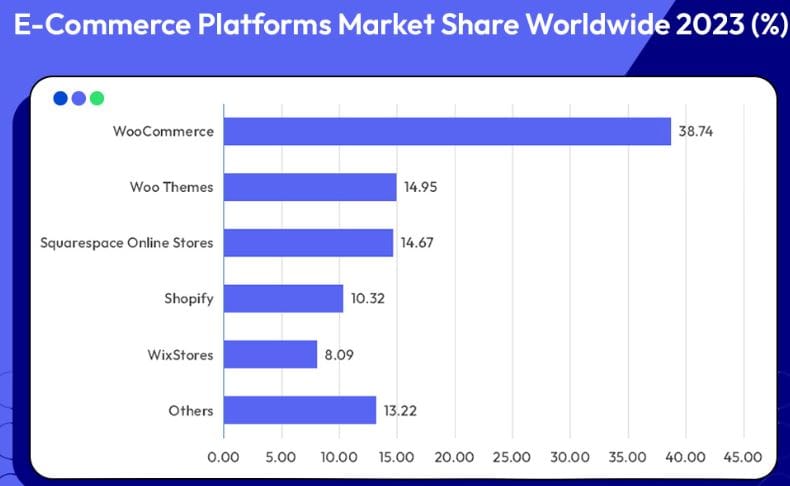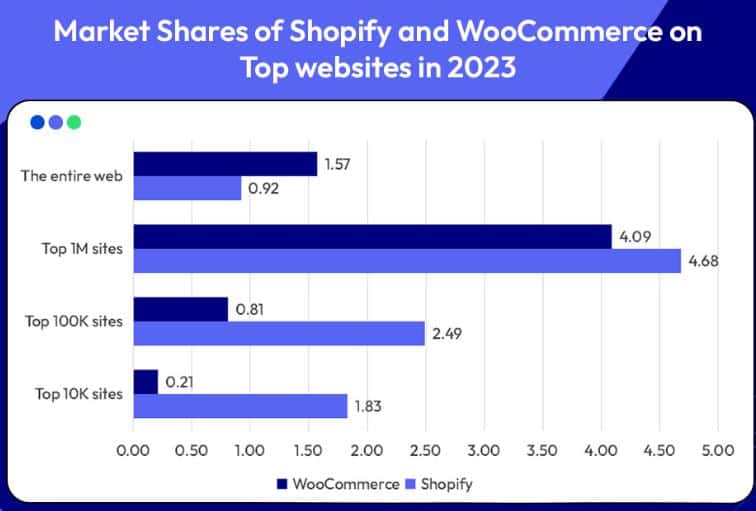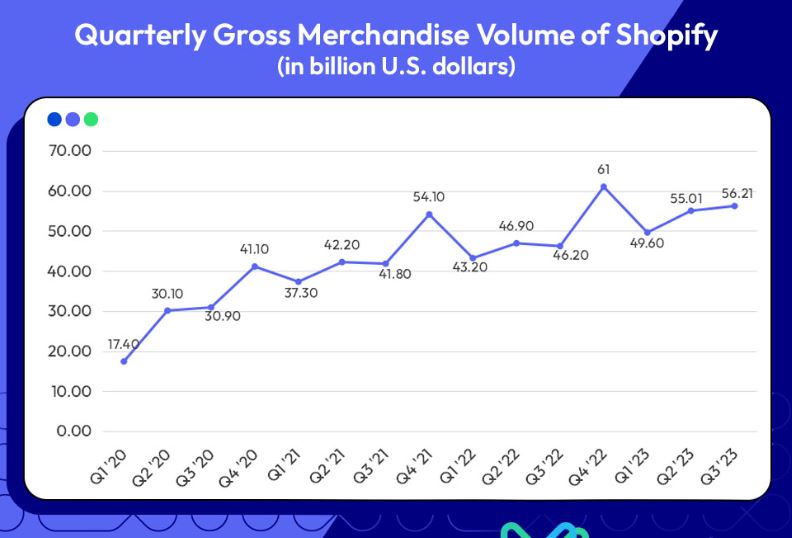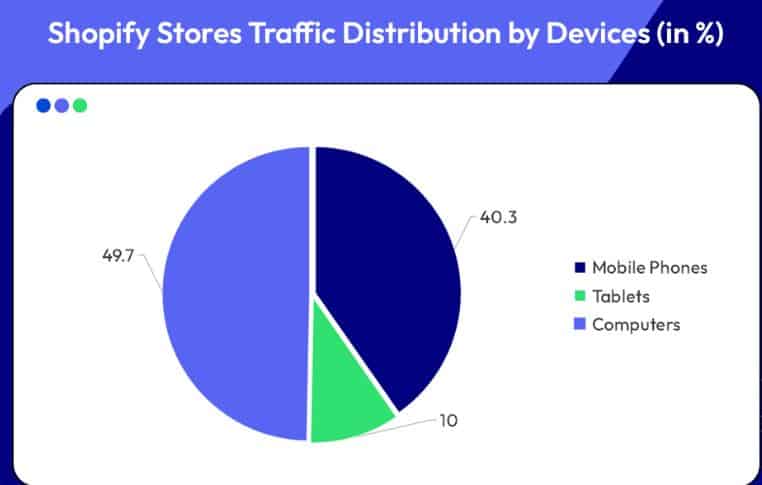BEST SHOPIFY STATISTICS YOU NEED TO KNOW IN 2024

BEST SHOPIFY STATISTICS YOU NEED TO KNOW will be described in this article. Embarking on a journey through the world of e-commerce in 2024? Look no further! In this comprehensive blog, we’re about to unveil a treasure trove of over 70 Shopify statistics that will equip latest insights and knowledge about this e-commerce giant. These statistics are your compass for navigating the Shopify ecosystem in 2024 and beyond. From user demographics to sales data, mobile commerce trends, and the impact of Shopify on local economies, we’ve got you covered.
BEST SHOPIFY STATISTICS YOU NEED TO KNOW IN 2024
In this article, you can know about BEST SHOPIFY STATISTICS here are the details below;
So, let’s dive in and explore the vital Shopify statistics you need to know to thrive in the world of e-commerce this year.
About Shopify
Shopify, a cloud-based, multi-channel commerce platform, has been a game-changer small & the medium-sized businesses worldwide. Starting as a small online store, Shopify has evolved into a major e-commerce platform that’s reshaping how businesses sell online.
Shopify’s mission is straightforward yet ambitious: to make commerce better for everyone. It’s about simplifying the online selling process, enabling merchants to sell products not only on their websites but also across various marketplaces and social media channels.
The core feature Shopify provides include:
- Ease of Use and User-Friendly Interface: It’s designed for ease, allowing anyone, regardless of technical skill, to set up and manage an online store with ease. From choosing themes to uploading products, Shopify simplifies e-commerce for everyone.
- Comprehensive E-Commerce Tools: Shopify offers a vast array of tools, encompassing product management, inventory tracking, and Shopify Payments for integrated payment processing. These tools handle everything from marketing and secure checkout to shipping, providing an all-in-one solution for online businesses.
- Customization and Scalability: With a multitude of themes & the apps available Shopify App Store, customization is at the heart of Shopify. It doesn’t just meet the current needs of businesses but also scales with them, accommodating everything from small startups to large enterprises.
- Integrated Analytics and Reporting: Shopify’s analytics and reporting features offer valuable insights, allowing merchants to track sales, orders, and customer data. These insights crucial for the informed decision-making and strategic planning for business growth.
As we delve deeper into the Shopify statistics and trends in 2024, it’s clear that Shopify is more than just an e-commerce platform; it’s a comprehensive solution empowering businesses globally. Stay tuned as we explore over 100 key statistics that highlight Shopify’s growth, challenges, and its pivotal role in the e-commerce landscape.
As of December 31, 2022, Shopify employed about 11,600 people, even after a 20% reduction in 2023.
Shopify Statistics: Market Position
- As of 2023, Shopify ranks fourth with a 10.32% share in the global market for leading e-commerce software platforms and technologies.
- Shopify ranks 14th among internet companies with the largest market capitalization in the world.
- Shopify Pay Installments ranks third with a 13.8% market share in the global online payment processing technologies sector.
- Shopify holds the top position with a 28% market share of e-commerce software platforms in the United States.
- In the United Kingdom as of June 2023, Shopify holds the second-highest market share among e-commerce software providers at 21%, closely following WooCommerce Checkout at 22%.
- Although run slower in the website number, Shopify dominates in higher-traffic websites, holding a significantly larger market share in the top 10K and 100K sites compared to WooCommerce.
Shopify Usage Statistics
- Shopify powers 7,284,564 websites, including 4,588,983 currently live websites.
- Shopify experienced a growth in new store additions from 3.75 in 2022 to 4.5 in 2023, reflecting an annual growth rate of 16.7%.
- Out of 4.4 million Shopify stores, 1.7 million engage in multi-channel selling, accounting for 38.6% of the total.
- Shopify facilitates over $444 billion in global economic activities through stores with international sales.
- More than 457 million people have made purchases from e-commerce stores powered by Shopify or Shopify Plus in one year.
- Shopify People
- Shopify’s user base increased by an impressive 52.33% over the past year.
- In December 2023, shopify.com received 191.56 million visits, with an average session duration of 19 minutes and 33 seconds.
- A total of 4,895 Shopify stores have physical locations.
- The typical time before a full mobile page loads on Shopify is 4.2 seconds.
- A good customer lifetime value (LTV) range for a Shopify store falls between $300 to $400.
- Shopify stores have accumulated over 800,000 customer reviews over the years.
- The average Shopify bounce rate is 41.1%.
Shopify Sales and Transaction Data
- In the fiscal year 2022, Shopify generated over $1.4 billion from subscription solutions and approximately $3 billion from merchant solutions.
- For the quarter concluding on September 30, 2023, Shopify reported revenues of $1.7 billion, marking a rise of 25% from the same quarter the previous year (Shopify).
- A 2020 survey of Shopify merchants revealed that the median monthly revenue for their stores was $2,900, with the top 10% of stores earning over $11,000 per month.
- Shopify stores average revenue per customer is approximately $92.
- Over the twelve-month period ending September 30, 2023, Shopify’s revenue reached $6.651 billion, reflecting a 26.8% growth from the year prior.
- As of the third quarter of 2023, Shopify’s Gross Merchandise Volume (GMV) reached $56.20 billion, marking a 22% year-over-year increase, and showing a 12% growth from 2022.
- Q3 ’23 21In the three months ending in September 2023, recurring payments on Shopify amounted to $486 million, marking a 22.4% year-to-year increase.
- In the third quarter of 2023, Shopify’s Gross Payments Volume reached $32.76 billion, representing a 31% increase year-over-year, and a 24% rise from 2022.
- As of May 2023, the average conversion rate for Shopify stores across e-commerce sites was 2.02%.
- Shopify merchants’ revenue peaked when collective sales reached $4.2 million per minute at 12:01 p.m. EST on Black Friday 2023.
Shopify Mobile Commerce Statistics
- Mobile devices contribute significantly to Shopify’s traffic, accounting for 50.3% of visits (40.3% from mobile phones and 10% from tablets), while computers make up 49.7%.
- Approximately 66% of orders in Shopify shops are placed on mobile devices.
- In 2022, mobile shopping from Shopify merchants accounted for 69% of online sales during Black Friday Cyber Monday.
Shopify Development Services
Start generating more revenue enhanced Shopify store built by us. No more stress over platform complexity.
Shopify Merchants and Stores
- Apparel is the category chosen by the most sellers in 2023, with a total of 520,321 stores.
- As of July 2023, the largest portion of Shopify online stores, at 29.87%, sell between 1-9 products, whereas the smallest segment, at just 0.17%, offer an extensive range of 25,000-99,999 products.
- The 3 largest markets of Shopify are United States with a 58.05% share, followed by the United Kingdom at 9.44%, and Canada at 7.08%.
- There are 1,065 Shopify stores that sell Currencies & Foreign Exchange products.
Shopify Plus and Large Enterprises
- Presently, there are 28,494 live stores running Shopify Plus.
- Shopify Plus stores saw a 2.5% quarter-over-quarter increase and a 14% year-over-year increase in adoption during the fourth quarter of 2023.
- Shopify Plus merchants, with annual sales revenues ranging from $1 million to $500 million, have experienced an average year-over-year growth of 126%.
- The Enterprise version of Shopify guarantees a server uptime of 99.98%.
Shopify App Ecosystem and Third-Party Integrations
- The Shopify App Store offers over 10,000 apps for users to enhance their stores.
- Shopify users have collectively installed more than 25 million apps from the Shopify App Store.
- As a long-time and trusted partner of Shopify, Avada offers a rang of apps to help you maximize website performance and deliver optimal conversion rates. Also check Press Release Software
EXPLORE AVADA’S APPS FOR YOUR STORE
Can’t find yours? Customize the perfect app only for you
Shopify App Development
Let’s build your Shopify App in the way you want, for your needs!
- A mere 0.97% of Shopify users opt for custom themes.
- As of July 2023, USPS is the leading shipping carrier for Shopify stores, used by 149,709 online stores, followed by UPS with 94,237 stores, and Fedex with 63,560 stores.
- For orders within the same country, the typical delivery time is 3-5 business days.
- Shopify users can choose from more than 100 website themes.
- There are 29 different checkout customizations available for Shopify stores.
- Shopify offers a selection of over 100 credit card payment providers for users to choose from.
- Over 80% of Shopify merchants utilize an app within their Shopify storefront.
- According to Shopify, an average merchant utilizes 6 applications.
- The Shopify app store has around 7,200 sellers (partner developers).
Shopify Marketing and Social Media Statistics
- The average number of pages per session for Shopify is 2.8.
- There are more than 4 millions Shopify websites that utilize Shopify Blog as part of their content strategy.
- Email users have the greatest conversion rates on Shopify (4.29%), followed by product search (3.04%), direct search (2.93%), and social media (1.81%).
- Businesses invested an estimated $68 billion in social media advertising in the US in 2023, and the global figure stood at $207 billion.
- Sixty-eight percent of Shopify stores have implemented loyalty programs.
- Approximately 42,200 partners have referred merchants to Shopify.
- Over one-third (42%) of Shopify stores utilize live chat for both customer support and marketing purposes.
- Shopify’s Net Promoter Score (NPS) stands at 34, with 57% Promoters, 20% Passives, and 23% Detractors.
- Users can send up to 40,000 emails per campaign and run up to 5 campaigns per week.
- A total of 36,660 stores employ Refersion for affiliate marketing.
- There are 2,875 Shopify installed In-Store Pickups app.
- More than 95% of successful Shopify stores use at least one SEO app.
- 80% of the consumers expect free shipping when ordering certain dollar amount of the products, with 66% expecting free shipping for all online orders.
- Instagram is used by 52.3% of Shopify stores in England.
- Each Shopify merchants’ follower on Instagram was estimated to bring them a value of approximately $429.02 in terms of business or sales generated.
- The category of Social Networks on Shopify has 1,793 active merchants.
Shopify Sustainability Approach
- In March 2022, total carbon removal purchases reached $32 million, and Shopify pledged to spend a combined $925 million on carbon removal efforts.
- Shopify has extended over $477 million in cash advanced and loans to merchants worldwide.
- Shopify Capital Business Loans range from as low as $200 up to $1 million, with a loan term of 12 months.
- The Shopify Entrepreneurship Index highlights that British businesses on Shopify directly supported over 78,000 jobs and contributed to nearly 200,000 jobs in total in 2022.
Conclusions
In conclusion, these 70+ Shopify statistics are your compass for thriving in the e-commerce world in 2024. Shopify, a global e-commerce giant, empowers businesses with its user-friendly platform, robust features, and market presence.
Shopify’s market position is strong, with a significant share in e-commerce software platforms. It powers over 7.3 million websites and continues to grow annually. Mobile commerce is a key driver, with billions in global economic activity. Meanwhile, Shopify Plus caters to large enterprises and has seen substantial growth. Its app ecosystem boasts over 8,000 apps, enhancing user experiences.
Email marketing proves effective, and social media advertising investments are substantial. Loyalty programs are common, and sustainability is a priority.











